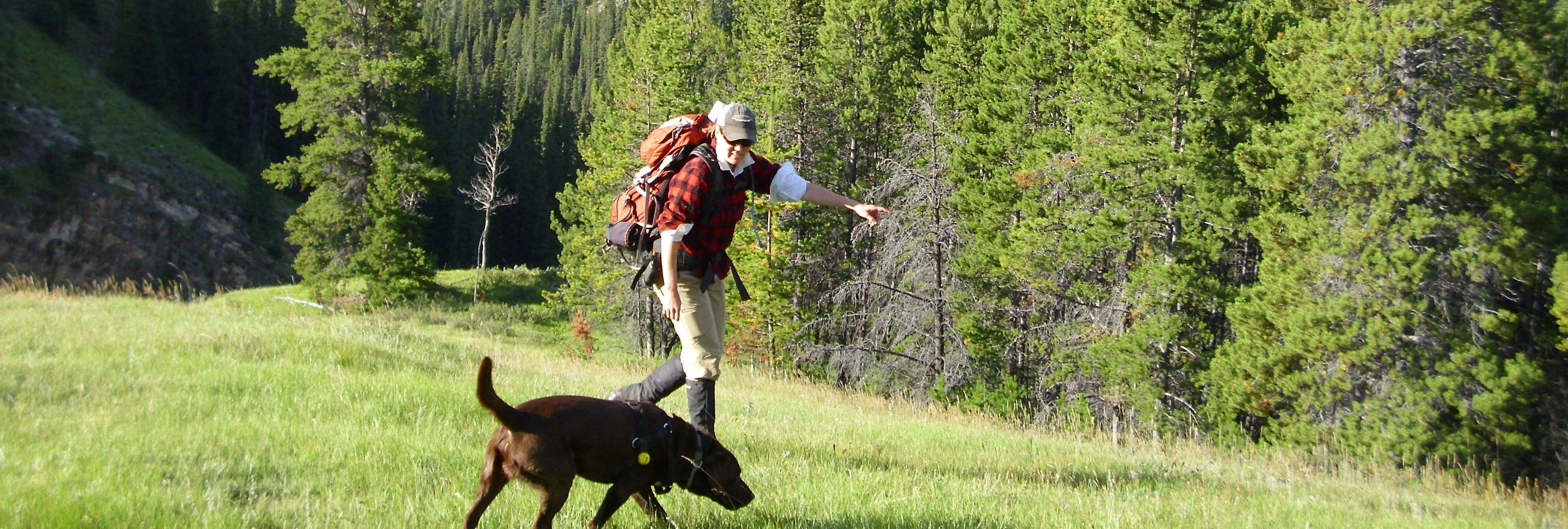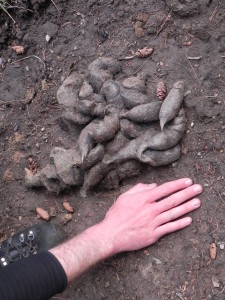Since 2008, no predators have been collared in the ranch’s direct vicinity. Understanding calf mortality cannot happen without also understanding predators’ patterns and routines… So how do we deal with that?
We are using highly-trained scat detection dogs to augment data on calf mortality with information on relative distributions and diet among predator species. In 48 cells of 5 km² each, a team consisting of dog and handler survey for bear, wolf, coyote, and cougar scats. These dogs are highly motivated and will sit once they detect their target: scat. As a reward, they are allowed to play ball. The cells are spread out over much of the Ya Ha Tinda herd’s range: from east of the ranch, across YHT, and into Banff National Park.
Scats collected using dogs are pinpointed on a map and used to analyze the distribution of canids, ursids and felids. Dogs can process multi-species scents over a large area and precisely detect scats in a short amount of time. Wildlife detection using dogs is not only non-invasive but it also is one of the most reliable methods in use nowadays. Not only can scats be useful for DNA extraction and specific information such as species, age and individual identity, but we are using the scats we collect to validate existing maps of predation risk to the elk by wolves and bears, and in comparison with predator occupancy surveys being conducted with remote cameras…
Field teams also collect scats on a regular basis. Once opportunistically sighted, these scats are collected and used to determine the relative diet between predators. Analyses of wolf, cougar, and bear feces will indicate how much of their diet is made of elk, and more specifically of elk calves.
We might be surprised once the results for YHT come out… Stay with us if you want to know more about them!!


